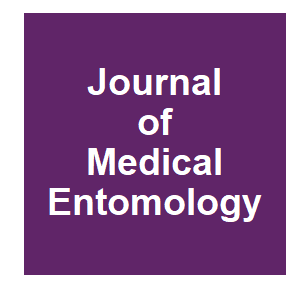ReMOT Control Delivery of CRISPR-Cas9 Ribonucleoprotein Complex to Induce Germline Mutagenesis in the Disease Vector Mosquitoes Culex pipiens pallens (Diptera: Culicidae)

|
X. X. Li, Y. Xu, H. B. Zhang, H. T. Yin, D. Zhou, Y. Sun, L. Ma, B. Shen and C. L. Zhu,
Journal of Medical Entomology,
58.
2021.

The wide distribution of Culex (Cx.) pipiens complex mosquitoes makes it difficult to prevent the transmission of mosquito-borne diseases in humans. Gene editing using CRISPR/Cas9 is an effective technique with the potential to solve the growing problem of mosquito-borne diseases. This study uses the ReMOT Control technique in Culex pipiens pallens (L.) to produce genetically modified mosquitoes. A microinjection system was established by injecting 60 adult female mosquitoes-14 mu l injection mixture was required, and no precipitation occurred with <= 1 mu l of endosomal release reagents (chloroquine or saponin). The efficiency of delivery of the P2C-enhanced green fluorescent protein-Cas9 (P2C-EGFP-Cas9) ribonucleoprotein complex into the ovary was 100% when injected at 24 h post-bloodmeal (the peak of vitellogenesis). Using this method for KMO knockout, we found that gene editing in the ovary could also occur when P2C-Cas9 RNP complex was injected into the hemolymph of adult Cx. pipiens pallens by ReMOT Control. In the chloroquine group, of the 2,251 G(0) progeny screened, 9 individuals showed with white and mosaic eye phenotypes. In the saponin group, of the 2,462 G(0) progeny screened, 8 mutant individuals were observed. Sequencing results showed 13 bp deletions, further confirming the fact that gene editing occurred. In conclusion, the successful application of ReMOT Control in Cx. pipiens pallens not only provides the basic parameters (injection parameters and injection time) for this method but also facilitates the study of mosquito biology and control. The wide distribution of Culex (Cx.) pipiens complex mosquitoes makes it difficult to prevent the transmission of mosquito-borne diseases in humans. Gene editing using CRISPR/Cas9 is an effective technique with the potential to solve the growing problem of mosquito-borne diseases. This study uses the ReMOT Control technique in Culex pipiens pallens (L.) to produce genetically modified mosquitoes. A microinjection system was established by injecting 60 adult female mosquitoes-14 mu l injection mixture was required, and no precipitation occurred with <= 1 mu l of endosomal release reagents (chloroquine or saponin). The efficiency of delivery of the P2C-enhanced green fluorescent protein-Cas9 (P2C-EGFP-Cas9) ribonucleoprotein complex into the ovary was 100% when injected at 24 h post-bloodmeal (the peak of vitellogenesis). Using this method for KMO knockout, we found that gene editing in the ovary could also occur when P2C-Cas9 RNP complex was injected into the hemolymph of adult Cx. pipiens pallens by ReMOT Control. In the chloroquine group, of the 2,251 G(0) progeny screened, 9 individuals showed with white and mosaic eye phenotypes. In the saponin group, of the 2,462 G(0) progeny screened, 8 mutant individuals were observed. Sequencing results showed 13 bp deletions, further confirming the fact that gene editing occurred. In conclusion, the successful application of ReMOT Control in Cx. pipiens pallens not only provides the basic parameters (injection parameters and injection time) for this method but also facilitates the study of mosquito biology and control. More related to this: Sex ratio distortion caused by meiotic drive in a mosquito Culex pipiens Experiments confirm a dispersive phenotype associated with a natural gene drive system
|



